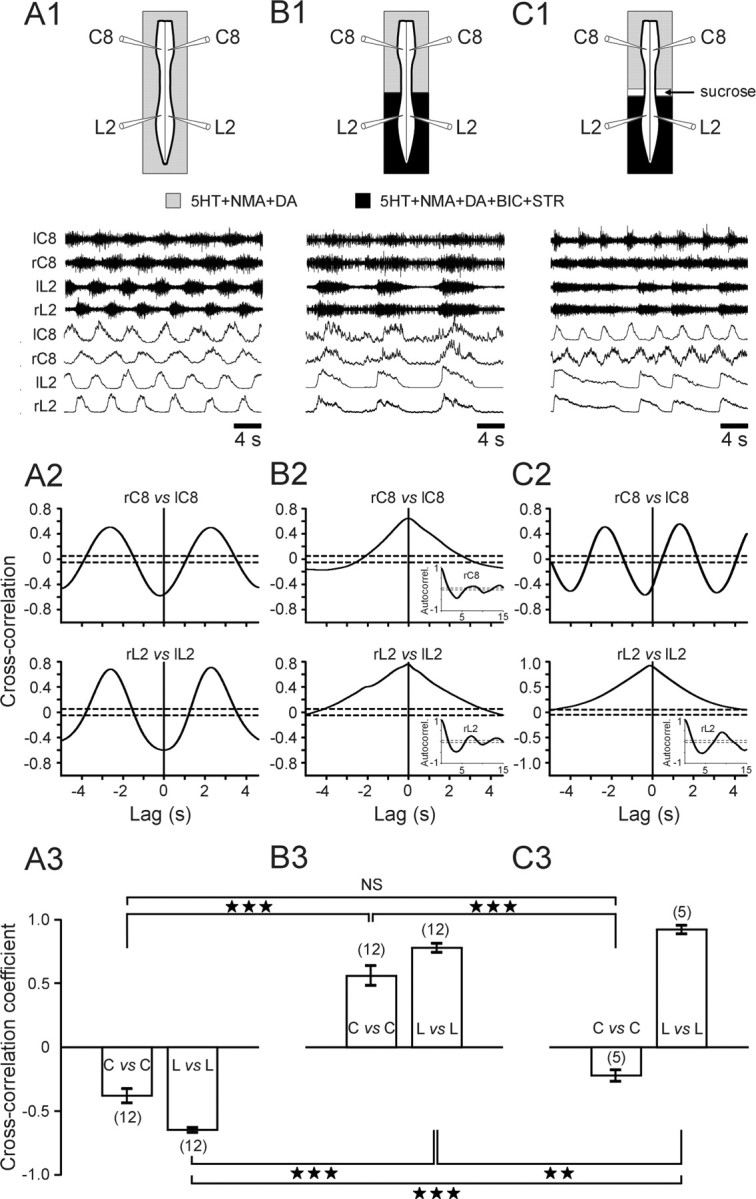Figure 5.

Caudorostral influence from lumbar to cervical generators in the absence of caudal synaptic inhibition. A1, B1, C1, Top, Schematics of experimental procedures; bottom, raw (upper) and integrated (lower) ventral root activity at cervical (bilateral C8) and lumbar (bilateral L2) levels during 5-HT/NMA/DA perfusion to the whole cord (A1) and (B1) when the spinal region caudal to T7 is additionally bathed with BIC (0.25 × 10-5 m) and STR (0.25 × 10-5 m). C1, Same saline conditions as in B1 but after additional sucrose blockade of axonal conduction through thoracic spinal segments. A2, B2, C2, Cross-correlograms (corresponding to A1, B1, C1, respectively) showing strict alternation (A2, control conditions) and then synchronization (B2, during lumbar BIC plus STR application) between bilateral ventral roots at both lumbar (L2) and cervical (C8) levels. C2, Cross-cord cervical alternation was restored by thoracic cord conduction block, although the lumbar roots continued to burst in synchrony. Each cross-correlogram was computed from 120 to 190 s of activity; dashed lines indicate 95% (±2 SEM) confidence interval. Autocorrelograms occurring under BIC/STR are added as insets in B2 and in the bottom of C2. A3, B3, C3, Mean cross-correlation coefficients (±SEM) of left-right motor root activity at cervical (C) and lumbar (L) levels under control saline (A3), during caudal blockade of synaptic inhibition (B3), and after additional thoracic conduction block (C3). Numbers of preparations are indicated in parentheses. ★★p < 0.01; ★★★p < 0.001. NS, Not significantly different.
